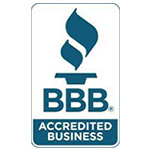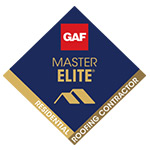
Image: Courtesy of Earl W. Johnston Roofing, LLC
A Century of Proven Performance
Hot asphalt roofing has been a cornerstone of South Florida construction for nearly a century. Dating back to the 1920s, as Miami and the surrounding areas experienced rapid development, builders sought roofing systems that could withstand the region’s extreme heat, humidity, heavy rains, and hurricane-force winds. Built-up roofing (BUR) systems, constructed with layers of felt and hot asphalt, quickly became the trusted standard for both commercial and residential buildings.

Image: Courtesy of Florida Memory
Early Adoption and Growth
Following the devastating Great Miami Hurricane of 1926, the need for stronger, more resilient construction methods became urgent. Hot asphalt roofing emerged as a superior solution, offering robust waterproofing and wind resistance. Throughout the 1950s to the 1970s, BUR systems dominated the South Florida landscape, protecting schools, hospitals, shopping centers, and high-rise buildings. Asphalt’s affordability and ability to seal around roof penetrations made it an obvious choice for the region’s flat and low-slope structures.

Image: Courtesy of Florida Memory
Hurricane Andrew and Building Code Evolution
The impact of Hurricane Andrew in 1992 fundamentally changed the roofing industry in South Florida. Stricter codes, particularly in the High-Velocity Hurricane Zone (HVHZ), demanded roofing systems that could resist higher uplift pressures and provide superior durability. Hot asphalt BUR systems are adapted to meet these standards by incorporating heavier felts, multiple plies, and aggregate surfacing for added protection. Asphalt roofing remained a critical component of compliance and resilience against Florida’s severe weather.
 Image: Courtesy of Combined Military Service Digital Photographic Files
Image: Courtesy of Combined Military Service Digital Photographic Files
Hot Asphalt Roofing Today
Even today, hot asphalt roofing continues to be a preferred choice for large-scale commercial, governmental, and industrial projects across South Florida. Although newer technologies like TPO, PVC, and self-adhered membranes are gaining popularity, BUR systems installed with hot asphalt remain one of the most hurricane-tested, long-lasting roofing options available.
Modern installations involve heating asphalt to approximately 425°F to 450°F, then mopping it between layers of roofing felts to create a multi-ply, redundant waterproofing system. The roof is finished with either a gravel surface or a cap sheet for added UV protection and durability.

Image: Courtesy of Earl W. Johnston Roofing, LLC
Why Hot Asphalt Still Matters
| Advantage | Benefit |
|---|---|
| Flexibility | Asphalt systems adapt to building movement without cracking. |
| Waterproofing | Multiple redundant layers ensure strong water resistance. |
| Wind Resistance | Fully adhered, heavy systems perform well against hurricane-force winds. |
| Cost-Effective | Especially practical for large commercial roof areas. |
| Self-Healing | Asphalt can reseal around minor punctures under heat. |
Hot asphalt roofing continues to offer peace of mind for property owners seeking the ultimate protection for their investment, especially in one of the harshest climates in the United States.
Final Thoughts
In South Florida, hot asphalt roofing isn’t just a construction method—it’s a time-proven defense against nature’s most brutal conditions. As the industry evolves, BUR systems installed with hot asphalt remain a trusted solution for those prioritizing durability, strength, and hurricane resistance.
Interested in learning more about built-up roofing or hot asphalt installation for your next project? Contact Earl W. Johnston Roofing today at 1-800-940-LEAK or visit johnstonroofing.com.














